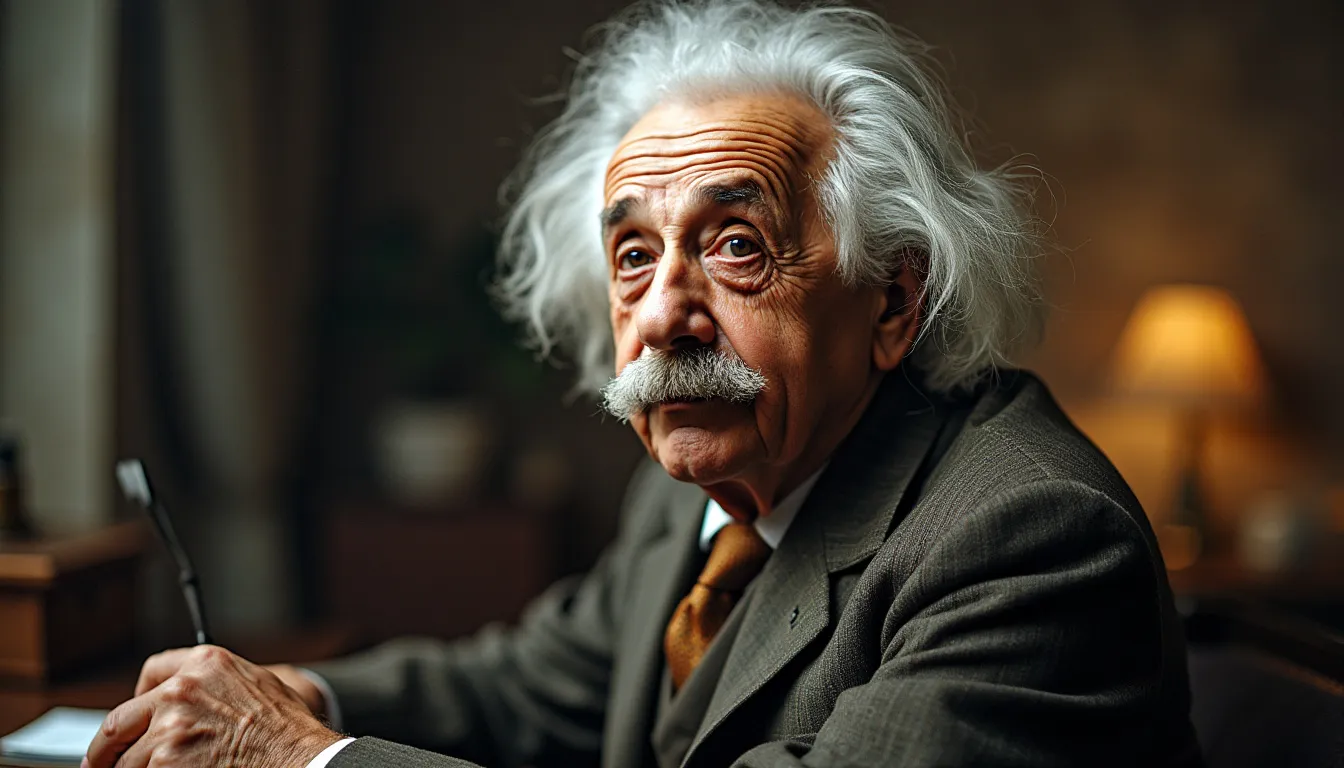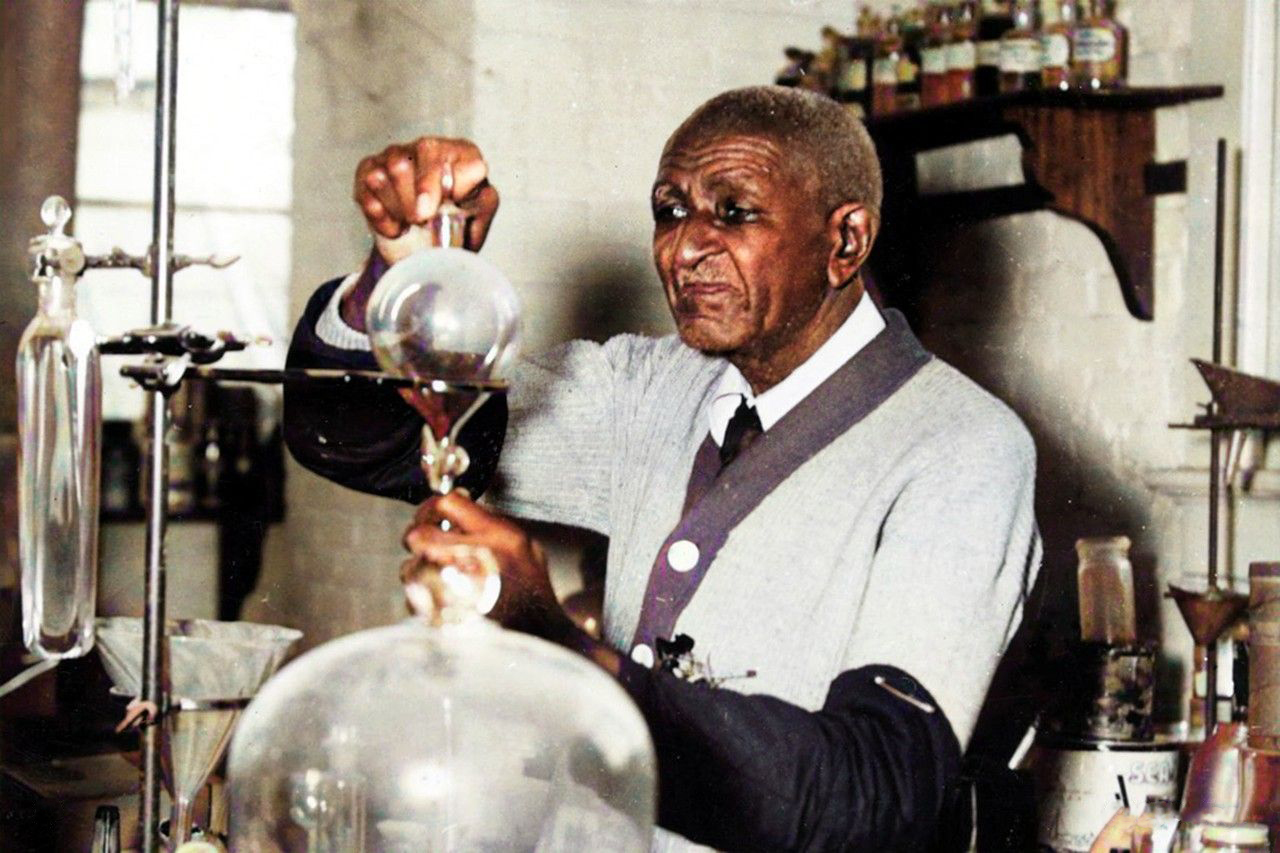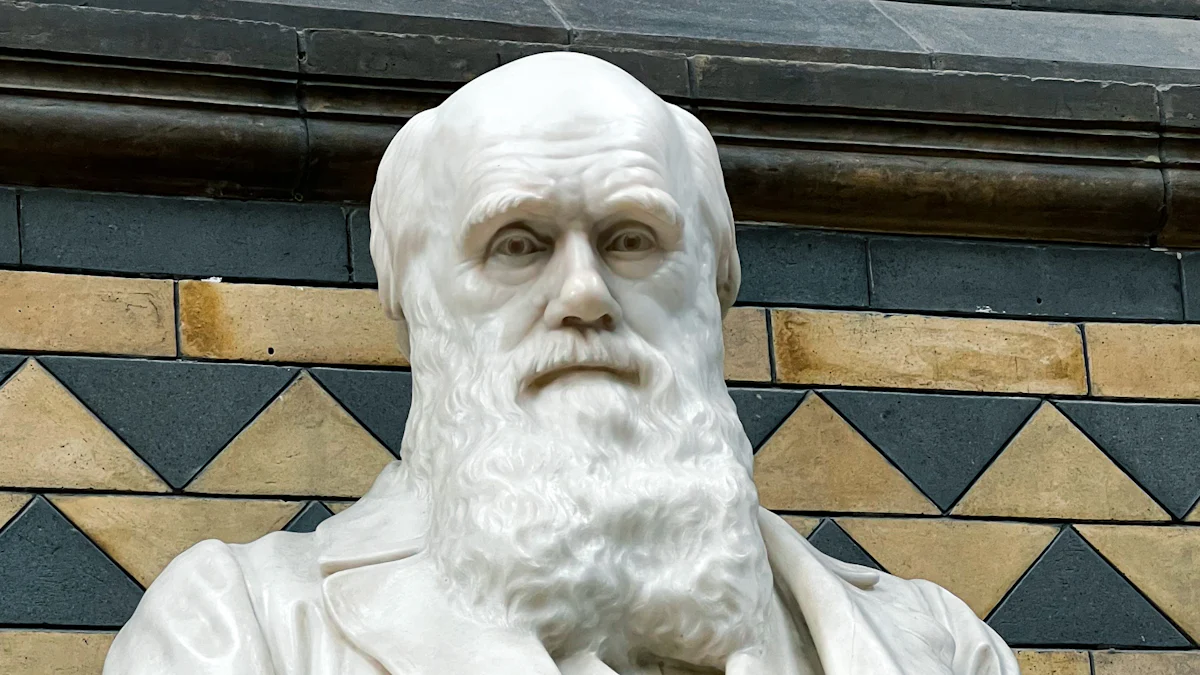Scientists Who Changed History

Throughout history, scientists have profoundly impacted our understanding of the world. Figures like Isaac Newton laid the groundwork for classical mechanics with his laws of motion, while Albert Einstein’s theory of relativity revolutionized physics and our concept of space-time. Marie Curie’s pioneering research on radioactivity led to advancements in medical treatments and nuclear energy. In biology, Charles Darwin’s theory of evolution challenged prevailing ideas and provided a unifying framework for understanding life’s diversity. Rosalind Franklin’s critical contributions to deciphering DNA’s structure paved the way for modern genetics. These innovators not only advanced science but also reshaped society and culture.
Albert Einstein

Early Life and Education
Albert Einstein was born in Ulm, Germany, in 1879. His family moved to Munich when he was a child. His father, Hermann, ran an electrochemical factory. His mother, Pauline, played the piano and instilled a love of music in him. Young Albert showed an early interest in science and mathematics. He attended the Luitpold Gymnasium in Munich, where he excelled in these subjects.
Einstein's academic journey took him to the Swiss Federal Polytechnic in Zurich. He graduated in 1900 with a degree in physics. During his studies, he met influential figures like Marcel Grossmann, who encouraged his scientific pursuits. Einstein's early career included a position at the Swiss Patent Office. This job allowed him time to develop his groundbreaking theories.
Major Achievements
Einstein's Theory of Relativity revolutionized physics. The theory introduced concepts of space-time and mass-energy equivalence, famously expressed as E=mc^2. His work predicted phenomena like black holes and gravitational waves. These predictions have been confirmed by modern science.
Einstein also made significant contributions to quantum mechanics. He explained the photoelectric effect, which earned him the Nobel Prize in Physics in 1921. His insights laid the groundwork for the development of quantum theory, influencing future research in the field.
Legacy
Einstein's impact on modern physics remains profound. His theories reshaped our understanding of the universe. Scientists continue to explore the implications of his work. The discovery of gravitational waves in 2015 provided further validation of his predictions.
Einstein's influence extends beyond physics. His ideas inspired generations of scientists, including many Black scientists who have contributed to diverse fields. His legacy encourages the pursuit of knowledge and innovation. Black scientists have built upon his work, advancing technology and improving human health. Einstein's contributions continue to inspire future generations, highlighting the importance of diversity in scientific progress.
Marie Curie
Early Life and Education
Background and Upbringing
Marie Curie was born in 1867 in Warsaw, Poland. Her family valued education deeply. Her father taught mathematics and physics. Her mother managed a boarding school for girls. Curie's early life included challenges. Her family faced financial difficulties. Despite this, Curie excelled in her studies.
Academic Pursuits and Challenges
Curie moved to Paris to attend the Sorbonne. She studied physics and mathematics. The academic environment posed challenges. Language barriers and financial constraints tested her resolve. Curie persevered and earned degrees in both subjects. Her dedication to science became evident during these years.
Major Achievements
Discovery of Radioactivity
Curie's research led to the discovery of radioactivity. She identified two new elements: polonium and radium. These discoveries revolutionized scientific understanding. Curie's work laid the foundation for nuclear physics. Her meticulous experiments provided groundbreaking insights.
Nobel Prizes in Physics and Chemistry
Curie received the Nobel Prize in Physics in 1903. She shared this honor with Pierre Curie and Henri Becquerel. Her contributions to radioactivity earned recognition. In 1911, Curie won the Nobel Prize in Chemistry. This award celebrated her isolation of pure radium. Curie became the first person to win Nobel Prizes in two different sciences.
Legacy
Advancements in Medical Research
Curie's discoveries advanced medical research. Radium's properties led to cancer treatment innovations. Her work contributed to the development of radiotherapy. The medical community continues to benefit from her findings.
Role Model for Women in Science
Curie inspired countless women in science. Her achievements broke barriers in a male-dominated field. Curie's legacy encourages women to pursue scientific careers. Her story remains a testament to perseverance and passion.
George Washington Carver

Early Life and Education
Childhood and Family Background
George Washington Carver was born into slavery in the early 1860s in Diamond, Missouri. His parents were enslaved by Moses Carver. After the Civil War, Moses and Susan Carver raised George and his brother as their own children. The Carvers encouraged education, which sparked George's lifelong passion for learning.
Academic Journey and Influences
Carver pursued education despite racial barriers. He attended a series of schools before earning a diploma from Minneapolis High School in Kansas. Carver then studied at Simpson College in Iowa, where he focused on art and piano. A professor recognized Carver's talent in botany and encouraged him to transfer to Iowa State Agricultural College. Carver became the first African American to earn a Bachelor of Science degree from Iowa State. His professors recognized his potential and offered him a faculty position.
Major Achievements
Innovations in Agriculture
George Washington Carver invented numerous agricultural techniques that transformed farming practices. Carver's research on crop rotation involved planting nitrogen-rich crops like peanuts, soybeans, and sweet potatoes. This practice rejuvenated depleted soil, increasing crop yields. Carver's work provided farmers with sustainable methods to improve productivity.
Contributions to Sustainable Farming
Carver promoted the use of natural fertilizers such as swamp muck and compost. These methods reduced reliance on commercial fertilizers and preserved soil health. Carver's innovations in sustainable farming earned him widespread recognition. Farmers adopted Carver's techniques, leading to more efficient and environmentally friendly agriculture.
Legacy
Impact on Agricultural Science
Carver's contributions to agricultural science remain significant. His research on crop rotation and sustainable practices revolutionized farming. Carver's work laid the foundation for modern agricultural methods. Scientists continue to study Carver's techniques to improve food production.
Influence on Environmental Practices
Carver's influence extends beyond agriculture. His emphasis on sustainability inspired future generations of scientists. African American scientists like Charles Drew, Daniel Hale Williams, and Chemist Percy Julian followed Carver's example. Ernest Everett and others credited Carver for pioneering environmental practices. Carver's legacy continues to inspire innovation in science and technology.
Katherine Johnson
Early Life and Education
Childhood and Family Background
Katherine Johnson was born in 1918 in White Sulphur Springs, West Virginia. Her parents valued education highly. Her father worked as a lumberman, while her mother was a teacher. The family supported Katherine's early interest in mathematics. Katherine Johnson showed exceptional talent in math from a young age. Her family moved to Institute, West Virginia, to provide better educational opportunities for her.
Academic Journey and Influences
Katherine Johnson enrolled at West Virginia State College at the age of 15. She studied under Dr. W.W. Schieffelin Claytor, one of the first African-American mathematicians. Dr. Claytor recognized her potential and mentored her closely. Katherine graduated summa cum laude with degrees in mathematics and French. Her academic journey set the stage for her future contributions to science.
Major Achievements
Contributions to NASA's Space Missions
Katherine Johnson joined NASA in 1953. Her work involved calculating trajectories for space missions. Johnson's calculations proved crucial for the success of the Mercury and Apollo programs. Her expertise ensured safe and accurate space travel. Charles Boden, a former NASA Administrator, stated that Katherine Johnson played a vital role in enabling astronauts to reach space. Her work opened doors for women and African-Americans in leadership roles.
Pioneering Work in Mathematics
Johnson's pioneering work in mathematics earned her widespread recognition. Her calculations helped synchronize Project Apollo's Lunar Lander with the command and service module. Johnson's mathematical prowess contributed to the success of the first moon landing. Her work demonstrated the importance of precise calculations in space exploration.
Legacy
Role Model for Women and Minorities in STEM
Katherine Johnson became a role model for women and minorities in STEM fields. Her achievements broke barriers in a predominantly male industry. Johnson's legacy inspires countless individuals to pursue careers in science and technology. Her story highlights the importance of diversity in scientific progress.
Influence on Space Exploration
Katherine Johnson's influence on space exploration remains profound. Her contributions laid the groundwork for future space missions. President Barack Obama awarded her the Presidential Medal of Freedom in 2015. This honor recognized her significant impact on NASA and space exploration. Johnson's legacy continues to inspire scientists and engineers worldwide.
Isaac Newton
Early Life and Education
Childhood and Education
Isaac Newton was born in 1642 in Woolsthorpe, England. His Newton's early life was marked by challenges. Newton's father passed away before his birth. His mother remarried, leaving him with his grandmother. Newton attended The King's School in Grantham. He showed a keen interest in mechanics and mathematics.
Newton later enrolled at Trinity College, Cambridge. He studied under the guidance of prominent scholars. His education focused on classical texts and mathematics. Newton's curiosity led him to explore beyond the curriculum.
Influential Mentors and Studies
Newton's time at Cambridge introduced him to influential mentors. Isaac Barrow, a mathematician, recognized Newton's potential. Barrow encouraged Newton's exploration of calculus. Newton's studies included the works of Galileo and Kepler. These studies inspired his groundbreaking theories.
Major Achievements
Laws of Motion and Universal Gravitation
Newton formulated the Laws of Motion in 1687. These laws revolutionized the understanding of physics. The first law described inertia. The second law related force, mass, and acceleration. The third law stated that every action has an equal and opposite reaction. Newton's work provided a framework for classical mechanics.
Newton also developed the Law of Universal Gravitation. This law explained the gravitational attraction between masses. Newton's insights unified celestial and terrestrial mechanics. His work laid the foundation for modern physics.
Contributions to Mathematics
Newton made significant contributions to mathematics. He developed calculus independently of Leibniz. Calculus became essential for scientific advancements. Newton's work in optics included the study of light and color. His experiments with prisms revealed the spectrum of light.
Legacy
Foundation of Classical Mechanics
Newton's discoveries established the foundation of classical mechanics. His laws of motion remain fundamental principles. Scientists continue to apply these principles in various fields. Newton's work transformed the study of physics.
Lasting Influence on Scientific Thought
Newton's influence extends beyond his lifetime. His ideas shaped scientific thought for centuries. Researchers build upon his theories to explore new frontiers. Newton's legacy inspires innovation and discovery. His contributions continue to guide scientific exploration today.
Charles Darwin

Early Life and Education
Family and Early Interests
Charles Darwin was born in 1809 in Shrewsbury, England. His family valued education and intellectual curiosity. Darwin's father, a physician, encouraged exploration of the natural world. Young Darwin developed an interest in collecting specimens and observing nature.
Educational Background
Darwin attended the University of Edinburgh but found medical studies unappealing. He then pursued theology at Christ's College, Cambridge. At Cambridge, Darwin met influential mentors like John Stevens Henslow. These mentors nurtured his passion for natural history.
Major Achievements
Theory of Evolution by Natural Selection
Darwin formulated the theory of evolution by natural selection. This theory proposed that species evolve over time through variations that enhance survival. Darwin's observations during the voyage on the HMS Beagle supported this groundbreaking idea.
Publication of "On the Origin of Species"
In 1859, Darwin published "On the Origin of Species." This work presented evidence for evolution and challenged existing beliefs. The publication sparked widespread debate and transformed scientific thought.
Legacy
Impact on Biology and Natural Sciences
Darwin's theory revolutionized biology and natural sciences. Scientists embraced the concept of evolution as a fundamental principle. Darwin's work laid the foundation for modern evolutionary biology.
Influence on Societal Views of Nature
Darwin's ideas influenced societal views of nature and humanity's place within it. The theory of evolution reshaped understanding of life's diversity. Darwin's legacy continues to inspire exploration and discovery in the natural world.
Nikola Tesla
Early Life and Education
Background and Early Influences
Nikola Tesla was born in 1856 in Smiljan, Croatia. His father was a priest, and his mother invented household appliances. Tesla showed an early interest in engineering and electricity. His family encouraged his curiosity and education.
Academic and Professional Journey
Tesla attended the Graz University of Technology. He studied electrical engineering and developed a deep understanding of physics. Tesla worked for the Continental Edison Company in France. Later, he moved to the United States to work with Thomas Edison. Tesla eventually established his own laboratory to pursue independent research.
Major Achievements
Development of Alternating Current (AC)
Tesla developed the alternating current (AC) system. This system revolutionized the transmission of electricity over long distances. AC power became the standard for electrical distribution worldwide. Tesla's invention provided a more efficient and safer way to deliver electricity.
Innovations in Wireless Technology
Tesla pioneered wireless technology. He experimented with transmitting electrical energy without wires. Tesla's patents included methods for wireless power transmission. His ideas laid the groundwork for modern wireless communication systems.
Legacy
Contributions to Modern Electrical Systems
Tesla's contributions to electrical systems remain vital. His AC system powers homes and industries globally. Tesla's innovations continue to influence electrical engineering and technology.
Visionary Ideas and Their Impact
Tesla's visionary ideas inspired future generations. His concepts of wireless energy and communication have become reality. Tesla's legacy encourages innovation and exploration in science and technology.
Rosalind Franklin
Early Life and Education
Family and Education
Rosalind Franklin was born in 1920 in London, England. Her family valued education and encouraged her academic pursuits. Franklin attended St Paul's Girls' School, where she excelled in science and mathematics. She later studied at Newnham College, Cambridge, earning a degree in chemistry. Franklin's educational background laid the foundation for her future contributions to science.
Scientific Training and Career
Franklin pursued scientific training in X-ray crystallography. She worked at the British Coal Utilization Research Association, where she studied the porosity of coal. This experience honed her skills in crystallography. Franklin then joined King's College London, where she focused on DNA research. Her meticulous approach and expertise in X-ray diffraction became crucial in her scientific career.
Major Achievements
X-ray Diffraction Images of DNA
Franklin's work at King's College involved capturing high-quality X-ray diffraction images of DNA. Her photograph, known as "Photo 51," revealed the helical structure of DNA. This image provided essential data for understanding DNA's configuration. Franklin's precise measurements and observations were instrumental in this discovery.
Contributions to Understanding DNA Structure
Franklin's research contributed significantly to the understanding of DNA's structure. Her findings offered critical insights into the arrangement of DNA's components. The data she collected played a pivotal role in the development of the DNA double helix model. Franklin's contributions laid the groundwork for future advancements in genetics.
Legacy
Recognition in the Field of Genetics
Franklin's legacy in genetics remains profound. Her work initially went unrecognized, but her contributions have gained acknowledgment over time. Scientists now recognize Franklin as a pioneer in molecular biology. Her achievements continue to inspire researchers in the field.
Influence on Future Research in Molecular Biology
Franklin's influence extends to future research in molecular biology. Her techniques in X-ray crystallography set new standards for scientific investigation. Researchers build upon her methods to explore complex biological structures. Franklin's legacy endures as a symbol of excellence and perseverance in science.
Galileo Galilei
Early Life and Education
Background and Early Interests
Galileo Galilei was born in 1564 in Pisa, Italy. His family valued education and encouraged his intellectual curiosity. Young Galileo showed an interest in mathematics and mechanics. He often conducted experiments at home, sparking a lifelong passion for discovery.
Academic Achievements
Galileo attended the University of Pisa. He initially studied medicine but shifted his focus to mathematics. His talent in mathematics led to a teaching position at the university. Galileo's academic pursuits laid the groundwork for his future contributions to science.
Major Achievements
Improvements to the Telescope
Galileo made significant advancements in telescope design. He crafted an improved version that magnified objects up to 20 times. This innovation allowed him to observe celestial bodies in unprecedented detail. Galileo discovered the moons of Jupiter and the phases of Venus. These observations challenged existing astronomical beliefs.
Support for Heliocentrism
Galileo supported the heliocentric theory proposed by Copernicus. He argued that the Earth revolved around the Sun. In 1632, he published "Dialogue Concerning the Two Chief World Systems." This work defended heliocentrism and sparked controversy with the Catholic Church.
Legacy
Foundations of Modern Astronomy
Galileo's discoveries laid the foundation for modern astronomy. His observations provided evidence for the heliocentric model. Scientists built upon his work to further explore the cosmos. Galileo's contributions transformed the understanding of the universe.
Impact on Scientific Methodology
Galileo's approach to science emphasized observation and experimentation. He developed methods that became fundamental to scientific inquiry. His work influenced future scientists like Isaac Newton. Galileo's legacy endures as a pioneer of scientific methodology.
The collective impact of these pioneering scientists remains profound. Each individual has contributed significantly to fields like physics, chemistry, biology, and astronomy. Their discoveries continue to influence modern science and technology. The transformative power of human curiosity drives progress. These scientists dared to challenge the status quo. Their legacies inspire future generations to explore new frontiers. Diversity plays a crucial role in scientific discovery. The stories of these scientists highlight the importance of diverse perspectives. Future exploration in science promises to build upon their groundbreaking work.
See Also
Creators: Journeying from Ancient Pyramids to Space Innovators
Scientific Exploration: An Illustrated Reference
One Hundred and One Amazing Science Projects

